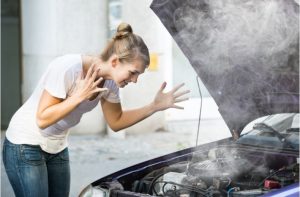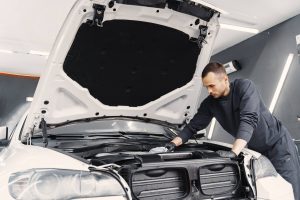An overheating engine is one of the most alarming problems a driver can face. Not only can it leave you stranded, but if not addressed promptly, it can lead to costly damage, including warped cylinders, blown gaskets, or even a seized engine. Understanding how to diagnose and fix common engine overheating issues can save both time and money, and help prevent major mechanical failures.
Common Signs of Engine Overheating

Recognizing the early signs of overheating can help you act fast. Here are the most common symptoms:
| Symptom | What It Means |
|---|---|
| Temperature gauge rises | The needle moves into the red zone, signaling abnormal engine temperature. |
| Steam or smoke under the hood | Indicates coolant is boiling and possibly leaking. |
| Sweet smell (coolant odor) | A sign of coolant leakage, often from a hose or radiator. |
| Engine warning light | Modern cars show warning lights or messages on the dashboard. |
| Ticking or knocking sounds | Hot oil thins and fails to lubricate parts properly, leading to unusual noises. |
Common Causes of Engine Overheating
Several components in the cooling system can malfunction or wear out. Here’s a list of frequent culprits:
1. Low Coolant Level
-
Cause: Leaks in the radiator, hoses, or water pump.
-
Fix: Check for visible leaks. Refill coolant and repair or replace faulty components.
2. Thermostat Failure
-
Cause: Stuck thermostat prevents coolant from circulating.
-
Fix: Replace the thermostat if it’s not opening at the proper temperature.
3. Radiator Issues
-
Cause: Clogged or leaking radiator.
-
Fix: Flush the radiator or replace it if damaged.
4. Water Pump Problems
-
Cause: Broken impeller or seal.
-
Fix: Replace the water pump.
5. Cooling Fan Malfunction
-
Cause: Fan motor, relay, or sensor failure.
-
Fix: Inspect and replace the faulty component.
6. Broken or Leaky Hoses
-
Cause: Cracks or weak hose clamps.
-
Fix: Replace old hoses and secure clamps properly.
7. Blown Head Gasket
-
Cause: Overheating or age-related wear.
-
Fix: Requires professional repair or engine rebuild.
Step-by-Step Diagnosis Guide
Here’s how you can diagnose the problem when your engine starts overheating:
| Step | Action | What to Look For |
|---|---|---|
| 1 | Pull over safely and turn off the engine | Allow the engine to cool before inspecting. |
| 2 | Check coolant level in the reservoir | Low or empty level may indicate a leak. |
| 3 | Inspect for visible leaks or puddles | Look under the car and around the radiator and hoses. |
| 4 | Check the radiator cap (when cool) | Damaged or weak caps can’t maintain pressure. |
| 5 | Start the engine and observe the cooling fan | Fan should activate when engine warms up. |
| 6 | Monitor the temperature gauge | If it rises quickly, thermostat or pump may be faulty. |
Fixing Engine Overheating – What You Can Do
If you’ve diagnosed the issue, some fixes are simple DIY tasks, while others require a professional mechanic. Here’s a quick guide:
| Problem | DIY Fix | Professional Fix |
|---|---|---|
| Low coolant | Refill with a 50/50 mix | Flush system if coolant is old or dirty |
| Loose or cracked hose | Replace hose and clamps | Replace damaged radiator connectors |
| Thermostat not opening | Replace thermostat | Diagnose system pressure with special tools |
| Faulty radiator cap | Replace with correct pressure rating | Test with pressure tester |
| Cooling fan not spinning | Replace fan relay or motor | Diagnose electrical system or ECM |
| Blown head gasket | N/A | Full engine inspection and gasket replacement |
Preventive Measures to Avoid Overheating

An ounce of prevention is worth a pound of cure. Follow these tips to prevent engine overheating in the future:
-
Check coolant level regularly – at least once a month.
-
Flush the radiator – every 30,000 to 50,000 km or as recommended by your manufacturer.
-
Inspect belts and hoses – for signs of wear, cracks, or leaks.
-
Monitor the temperature gauge – while driving, especially in hot weather.
-
Never ignore dashboard warnings – act promptly on overheating alerts.
-
Use the right type of coolant – as specified in your vehicle manual.
Where to Buy Quality Engine Parts
Need to replace a faulty thermostat, radiator, water pump, or other cooling system parts? Make sure you’re getting reliable, OEM-compatible components.
This online store offers a wide range of quality engine parts compatible with most vehicle makes and models. Fast shipping and detailed compatibility filters make it easy to find what you need.
Final Thoughts
Engine overheating can seem daunting, but with a systematic approach, it’s often manageable. Quick diagnosis, proper repair, and regular maintenance are the keys to preventing damage and ensuring long-term engine health. Always keep your cooling system in check and be attentive to the early signs — your car (and wallet) will thank you.